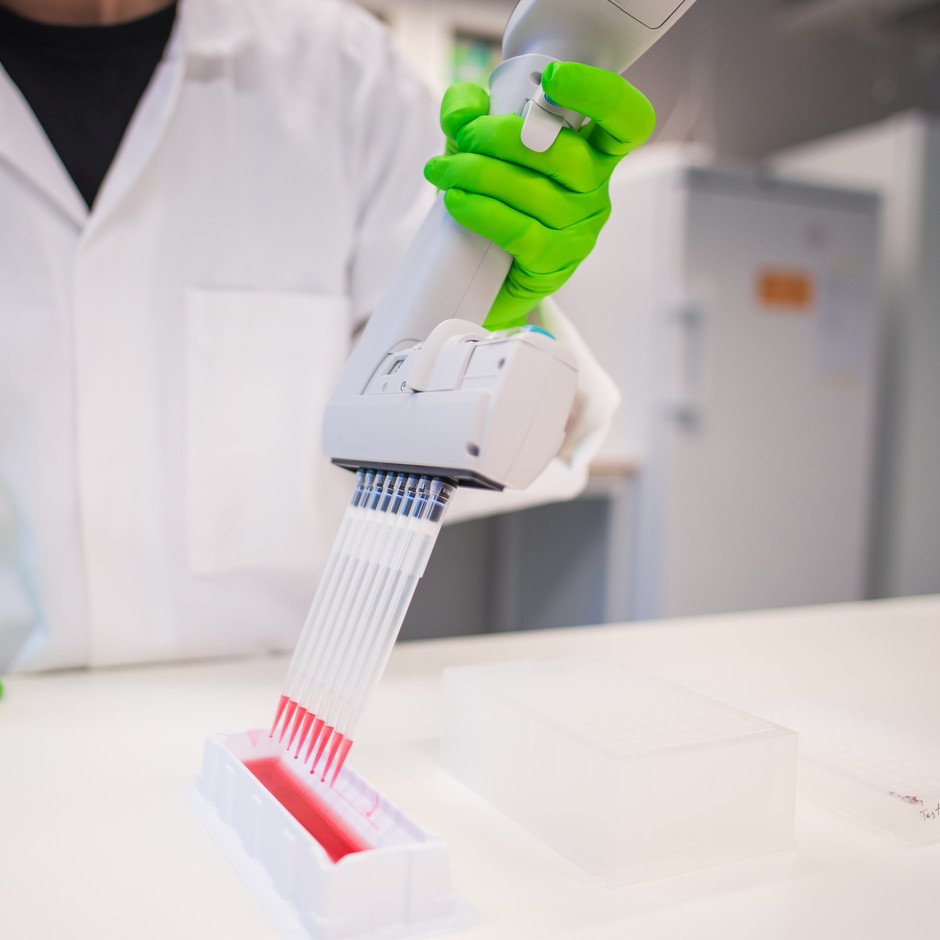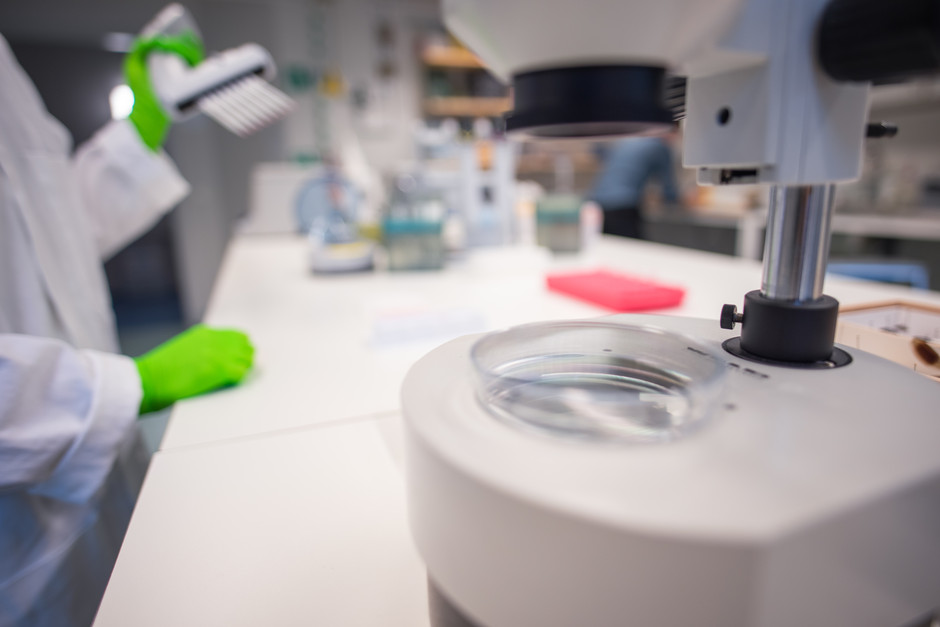State-of-the-art molecular research and environmental monitoring
The DNA-laboratory at the Department of Bioinformatics and Genetics is a research-infrastructure for generating state-of-the-art molecular data for research and environmental monitoring. It is a facility for the entire museum and includes well-equipped DNA-laboratories and staff with expertise in molecular methods and bioinformatics.
The DNA-laboratory provide support in generating genetic data from all kinds of organisms and environmental samples, bioinformatic analyses as well as training in both molecular methods and bioinformatics.
The DNA-laboratory at NRM is among the world-leading laboratories in museomics, i.e. generating and analyzing genome-wide data from old museum samples. Numerous researchers, students and research visitors from other institutions in Sweden and abroad use the facility, and our aim is to help researchers and students to reach their scientific goals.
The Centre for Palaeogenetics (CPG)
In collaboration with Stockholm University the NRM also hosts the Centre for Palaeogenetics (CPG). The CPG, which houses state-of-the-art ancient DNA (aDNA) facilities, brings researchers from different disciplines, such as biology, archaeology and geology, together into one research environment, creating a stimulating environment for exchange of ideas and collaborative projects. With its approximately 250m2 laboratory facilities, it is one of the largest aDNA laboratories in the world.
Services
- DNA extractions from all types of samples, including fresh material, old museum and environmental samples
- RNA extractions
- PCR amplification for Sanger sequencing
- Library-preparation for genome sequencing or reduced representation (e.g. target capture).
- Bioinformatics support in analyzing all kind of genetic data
- Training in molecular methods and bioinformatics
- Experimental design and planning support
Facilitites
Up-to-date equipment for large-scale quantification and generation of genetic data from all types of biological material. The facilities and equipment includes for example:
- Separate laboratories for eDNA, wildlife-forensic, museomics, as well as Pre-PCR and Post-PCR
- Extraction robots
- Pipetting robots
- Thermocyclers
- qPCR machines
- BioAnalyzer
Databases
- Larger databases need to have their own pages that end up under research and infrastructure, but they can of course be mentioned and linked to in other sections.
- Example database: Fishbase.
- If you are responsible for a database that is used externally and needs limelight, or already have your own page, it probably fits here.
Collaborations
- If necessary, list of collaborations/relevant research projects with other research organizations, universities and industries, and any positive research results that you would like to highlight.
- Description of the nature and extent of the cooperation
- Benefits and effects of the collaboration in relation to the scientific research infrastructure and its services
- Be sure to have permission from any contacts who should appear in the list.
Contact with the DNA laboratory

DNA-labbet

